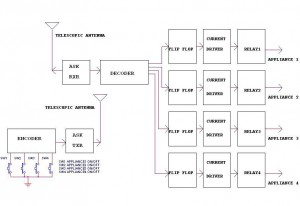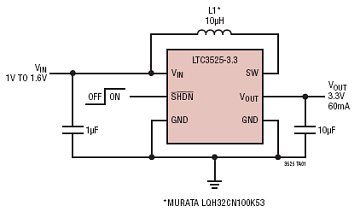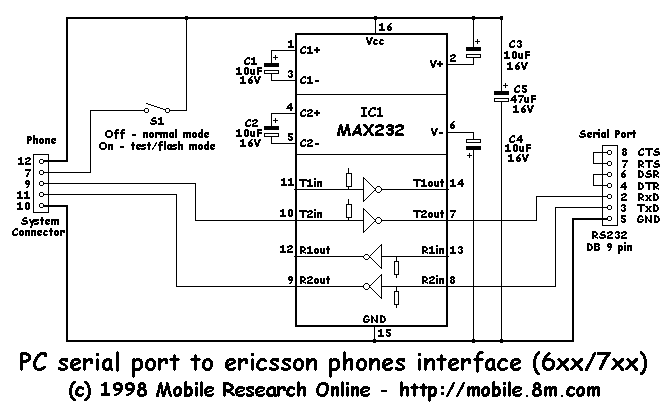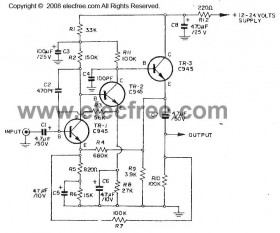
MT8885 Integrated DTMF Transceiver With Power-Down And Adaptive Micro Interface
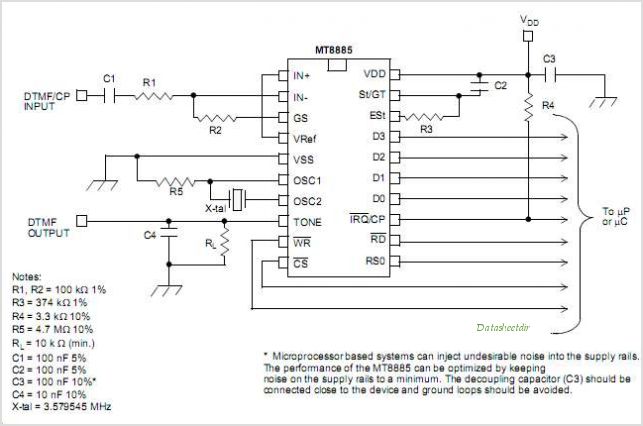
This design note presents a simple yet feature-rich 16-watt output, universal AC input adapter power supply for modems, hubs, or similar applications. The circuit utilizes a discontinuous mode (DCM) flyback converter topology designed around ON Semiconductor's NCP1027 monolithic current mode controller with an internal 700V MOSFET. The output can provide up to 1.5 amps peak and will maintain regulation at full output with input voltages as low as 85 Vac. The supply also includes an EMI input filter, along with adjustable brown-out and power limit features. A straightforward Zener diode and optocoupler feedback scheme is employed to achieve good output regulation with minimal components. Additionally, the schematic features an optional resonant snubber, which enhances efficiency by an additional two percentage points over the standard RCD snubber for the 120 Vac input range.
The described power supply circuit is engineered to deliver a reliable and efficient solution for powering devices such as modems and hubs. The use of a flyback converter topology allows for voltage step-down and isolation between the input and output, which is crucial for safety and performance in AC-powered applications.
The NCP1027 controller is a key component, providing integrated features that simplify the design while ensuring robust performance. With its internal MOSFET rated for 700V, this controller can handle high voltage transients, making it suitable for universal AC input applications. The discontinuous mode of operation is particularly advantageous for low to moderate output power levels, as it minimizes switching losses and improves overall efficiency.
The power supply's ability to regulate output at low input voltages (down to 85 Vac) ensures consistent performance even under varying line conditions, which is critical for devices that may experience fluctuations in supply voltage. The inclusion of an EMI input filter helps to mitigate electromagnetic interference, ensuring compliance with regulatory standards and improving the overall electromagnetic compatibility of the device.
Adjustable brown-out and power limit features enhance the reliability of the power supply by preventing damage during low voltage conditions and limiting output current under fault conditions, respectively. This adds an extra layer of protection for both the power supply and the connected load.
The feedback mechanism utilizing a Zener diode and optocoupler is a cost-effective solution that maintains tight output voltage regulation with minimal component count. This simplicity not only reduces the overall BOM (bill of materials) cost but also enhances reliability due to fewer components that could potentially fail.
The optional resonant snubber circuit is an advanced feature that can be implemented to further improve efficiency. By reducing the switching losses associated with the MOSFET during turn-on and turn-off transitions, the resonant snubber allows for smoother operation, particularly in the 120 Vac input range. This enhancement is beneficial for applications requiring higher efficiency, contributing to lower heat generation and potentially extending the lifespan of the power supply.
In summary, this power supply design is a well-rounded solution that combines efficiency, reliability, and simplicity, making it ideal for a wide range of applications in the communication and networking sectors.This design note presents a simple yet feature loaded 16 watt output, universal AC input adapter power supply for modems, hubs or similar applications. The circuit is a discontinuous mode (DCM) flyback converter topology designed around ON Semiconductor`s NCP1027 monolithic current mode controller with internal 700V MOSFET The output will provide
up to 1. 5 amps peak and will regulate at full output as low as 85 Vac input. The supply also includes an EMI input Filter as well as adjustable brown-out and power limit features. A very simple Zener Diode and Optocoupler feedback scheme is used that provides good output regulation with a minimum of components.
The schematic of an optional resonant snubber is also shown which will improve the efficiency an additional two percentage points over the standard RCD snubber for the 120 Vac input range (see figure 2 and plots). 🔗 External reference
The described power supply circuit is engineered to deliver a reliable and efficient solution for powering devices such as modems and hubs. The use of a flyback converter topology allows for voltage step-down and isolation between the input and output, which is crucial for safety and performance in AC-powered applications.
The NCP1027 controller is a key component, providing integrated features that simplify the design while ensuring robust performance. With its internal MOSFET rated for 700V, this controller can handle high voltage transients, making it suitable for universal AC input applications. The discontinuous mode of operation is particularly advantageous for low to moderate output power levels, as it minimizes switching losses and improves overall efficiency.
The power supply's ability to regulate output at low input voltages (down to 85 Vac) ensures consistent performance even under varying line conditions, which is critical for devices that may experience fluctuations in supply voltage. The inclusion of an EMI input filter helps to mitigate electromagnetic interference, ensuring compliance with regulatory standards and improving the overall electromagnetic compatibility of the device.
Adjustable brown-out and power limit features enhance the reliability of the power supply by preventing damage during low voltage conditions and limiting output current under fault conditions, respectively. This adds an extra layer of protection for both the power supply and the connected load.
The feedback mechanism utilizing a Zener diode and optocoupler is a cost-effective solution that maintains tight output voltage regulation with minimal component count. This simplicity not only reduces the overall BOM (bill of materials) cost but also enhances reliability due to fewer components that could potentially fail.
The optional resonant snubber circuit is an advanced feature that can be implemented to further improve efficiency. By reducing the switching losses associated with the MOSFET during turn-on and turn-off transitions, the resonant snubber allows for smoother operation, particularly in the 120 Vac input range. This enhancement is beneficial for applications requiring higher efficiency, contributing to lower heat generation and potentially extending the lifespan of the power supply.
In summary, this power supply design is a well-rounded solution that combines efficiency, reliability, and simplicity, making it ideal for a wide range of applications in the communication and networking sectors.This design note presents a simple yet feature loaded 16 watt output, universal AC input adapter power supply for modems, hubs or similar applications. The circuit is a discontinuous mode (DCM) flyback converter topology designed around ON Semiconductor`s NCP1027 monolithic current mode controller with internal 700V MOSFET The output will provide
up to 1. 5 amps peak and will regulate at full output as low as 85 Vac input. The supply also includes an EMI input Filter as well as adjustable brown-out and power limit features. A very simple Zener Diode and Optocoupler feedback scheme is used that provides good output regulation with a minimum of components.
The schematic of an optional resonant snubber is also shown which will improve the efficiency an additional two percentage points over the standard RCD snubber for the 120 Vac input range (see figure 2 and plots). 🔗 External reference

